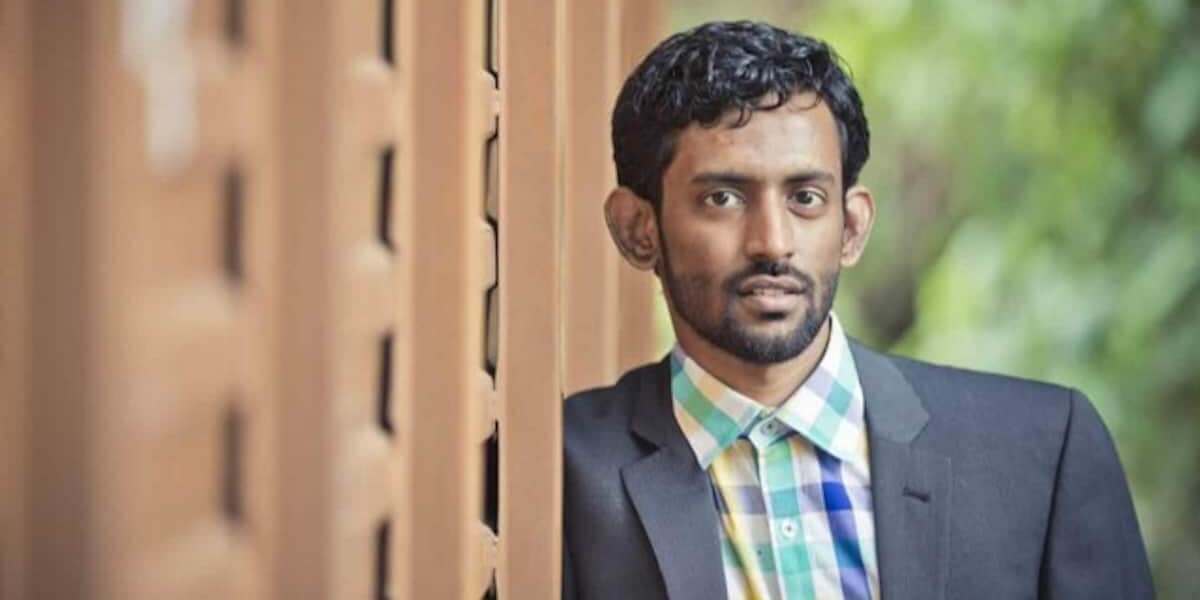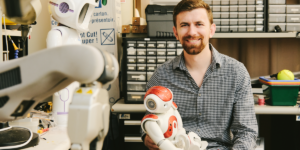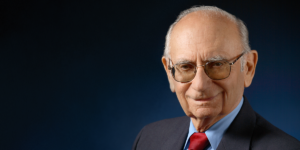
Manoj Gopalkrishnan has come up with a new COVID testing approach that would save money, time and resources, while quickly providing accurate results. (Photo/Courtesy of Manoj Gopalkrishnan)
In early 2020, as the world watched in horror at the spread of COVID-19, Manoj Gopalkrishnan experienced a sense of déjà vu.
A little more than a decade earlier, Gopalkrishnan, Ph.D. CS ’08, had lived through the swine flu pandemic. Then, as now, Gopalkrishnan noted that an acute shortage of testing made it difficult for countries to fully assess the health crises they faced. That’s especially true with COVID because of the large number of asymptomatic carriers.
In the early days of COVID, a shortage of testing kits and chemical reagents made it nearly impossible for many people around the world, including Americans, to obtain a screening. That led to symptomatic and asymptomatic carriers spreading the virus largely unchecked. When the number of available COVID tests finally increased, that caused a whole new host of problems. Anxious patients sometimes had to wait up to two weeks to receive the results because swamped labs lacked the equipment and personnel to process tests expeditiously. In the meantime, the virus left a large swath of death and acute illness in its wake.
Gopalkrishnan, a professor at the Indian Institute of Technology (IIT) Bombay and an expert in mathematics, computational and data science and molecular science, thought there had to be a better way. So, he came up with a new COVID testing approach that would save money, time and resources, while quickly providing accurate results.
Tapestry Pooling, the name of his research team, has developed an algorithm that would allow several tests to be screened at the same time. Unlike other forms of so-called “pooled testing,” Gopalkrishnan’s could accurately identify any positives without the need for additional follow-up screenings – a major breakthrough.
“I don’t know of anybody who has come up with a better solution,” said Charles Cantor, professor emeritus and former chair of biomedical engineering at Boston University and a project mentor to Gopalkrishnan. “His [approach] not only works, but it’s been tested for pooling samples in an intelligent way.”
Recently, Tapestry successfully evaluated 961 people for COVID by running a single lab test on 93 strategically arranged test tubes. Ten individual tests came back positive.
As a reflection of its promise, Tapestry was recently named one of the 10 finalists for the $6 million XPRIZE Rapid Covid Testing competition, a worldwide COVID-19 testing competition designed to create high-quality, affordable screenings to help society safely reopen and return to everyday activities.
“I am thrilled to have Tapestry recognized,” Gopalkrishnan said. “I am now at a stage where I want to make an impact. I want to change the way people are experiencing life for the better.”
Tapestry and Covid Testing
When an individual needs a COVID test, a healthcare worker typically swabs their nasal passage, puts the specimen in a test tube and sends it to a lab for processing. A lab technician adds chemical reagents, and the results usually come back one or two days later.
However, when there exists a shortage of kits or the number of individual tests swamps a lab’s ability to process them quickly, skilled technicians occasionally opt for a different method known as pooled testing. With this approach, a technician might put several swabs in each test tube to increase testing capacity. However, every single sample in any tube coming back positive would require a follow-up test, slowing down the entire process.
Enter Tapestry.
One of the first single-round methods ever developed, Tapestry enjoys several advantages over individual and other forms of pooled tests in identifying COVID, according to Gopalkrishnan.
For instance, it would likely take several days to screen and process samples for 1,000 people tested one-by-one, he said. In the meantime, asymptomatic people could unwittingly infect others. Similarly, traditional group testing, although generally more efficient than individual screenings, has its own limitations. In the above example, placing 10 patient swabs in a single test tube would reduce the number of initial tests to 100 from 1,000. However, if some samples came back positive, all 10 swabs in each of the flagged tubes would have to undergo a second round of confirmatory screenings – costing valuable time in a fast-spreading pandemic.
By contrast, “Tapestry could do it all in a single day,” Gopalkrishnan said. “It’s as simple as that.”
Tapestry, unlike many other COVID testing methods, can also ascertain relative viral loads in positive samples. Clinicians might find such information important, Gopalkrishnan said, since some experts believe people with higher viral loads might spread the infection easier.
Tapestry has a “graceful failure mode,” he added. That means if the number of positives in any batch are so high that its algorithm loses some of its effectiveness, Tapestry will alert lab technicians that its findings are not foolproof.
“What I don’t want the algorithm to do is call a sample positive when it is not positive or call a sample negative when it’s not negative,” said Gopalkrishnan, adding that Tapestry works best with positive rates under 2%. “So, I want my algorithm to say, ‘I don’t know.”’
Tapestry in action
In theory, Tapestry’s technology could screen massive numbers of COVID tests quickly and accurately. “Mathematically and algorithmically, the more tests the better,” Gopalkrishnan said.
However, lab and other limitations currently make that impossible. First, the more samples that need testing, the more likely technicians could make errors in arranging them according to the algorithm’s specifications. Next, the need to put ever-increasing numbers of samples into test tubes risks diluting the chemical agents that identify the virus.
To circumvent this challenge, Gopalkrishnan suggests combining Tapestry with traditional pooling testing methods. In this scenario, Tapestry’s single-round testing would kick in once the overall number of samples has been sufficiently whittled down.
Gopalkrishnan believes that in the near future, Tapestry could screen substantially more samples as labs increase their testing capabilities and technicians become more adept at overseeing complex single-round tests. At present, Tapestry can accurately test fewer than 1,000 samples at one time.
“Manoj has used sophisticated mathematics to design efficient systems that will benefit society in numerous ways. For example, his techniques should significantly lower the cost of large-scale COVID testing, which may save lives, particularly in developing countries,” said Leonard Adleman, the Henry Salvatori Chair Computer Science who served as Gopalakrishnan’s USC Viterbi doctoral thesis adviser:
Gopalkrishnan credits much of his academic and professional success to his time at Troy. Working with Adleman, a USC Distinguished Professor, whom he calls “easily the smartest person I’ve ever met in my life,” taught Gopalkrishnan to hone and deepen his research skills.
He hopes to leverage those abilities to expand Tapestry’s testing capabilities.
“Pretty much any pathogen has a signature sequence of RNA or DNA as part of it,” Gopalkrishnan said. “So, yes, this could be used for other diseases, such as tuberculosis, HIV and dengue fever and maybe even one day, cancer.”
Published on March 15th, 2021
Last updated on March 15th, 2021










